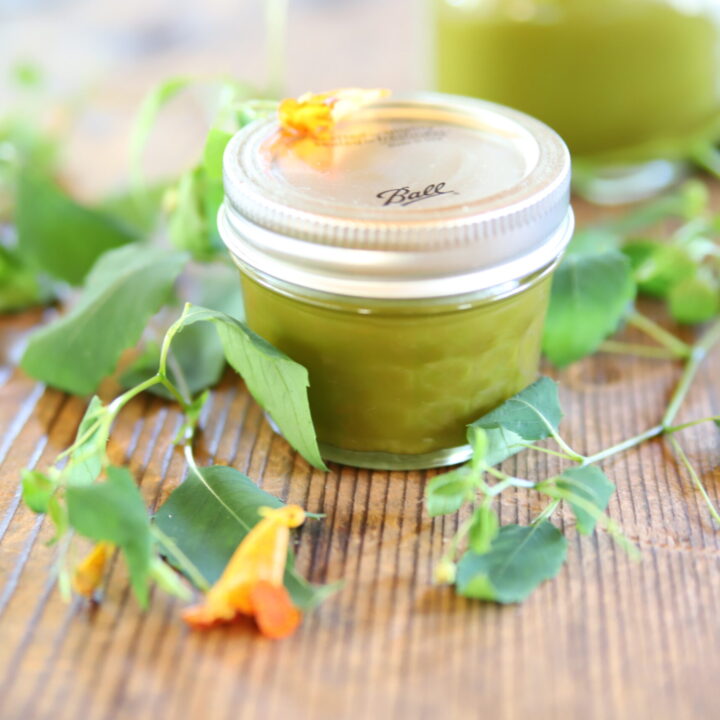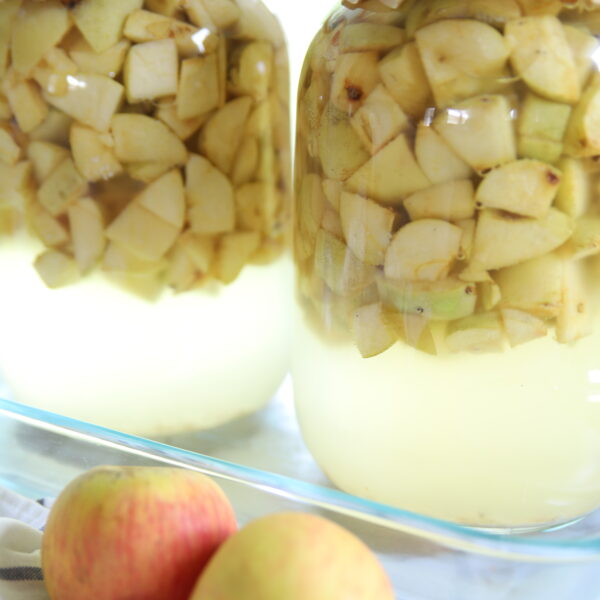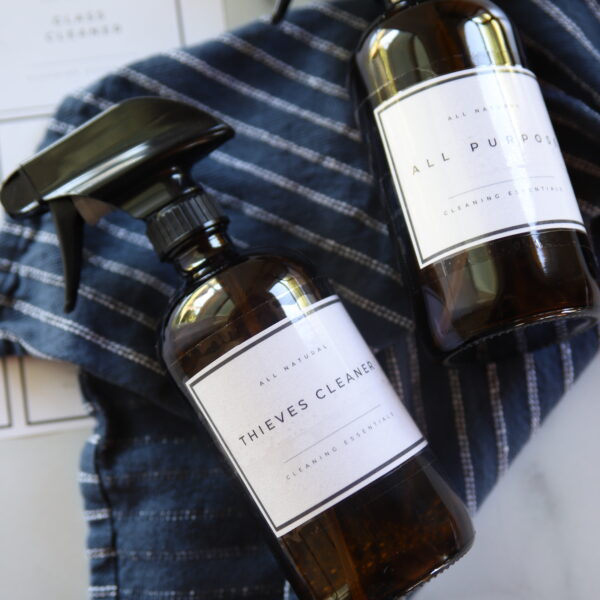Homemade Jewelweed salve is simple to make and if you have access to, or live near areas with a natural water source and partial shade, you may just be able to forage for your own fresh jewelweed.

Jewelweed is an herb that is commonly used for skin ailments, like bug bites, spider bites, mosquito bites, insect stings, rashes, and even eczema.
WHERE TO FIND JEWELWEED
Jewelweed products can be found online and at some natural food stores.
It can be found throughout most of the United States and can be foraged mindfully with future harvests in mind.
Always forage in clean, non-chemically sprayed areas.
HOW TO USE JEWELWEED
Jewelweed has been used by naturalists, herbalists, and pioneers through the years.
All the parts of the plant and flowers are edible. Some folks enjoy the flowers on salads and as a garnish.
I tend to be super sensitive and even natural things could cause a reaction in or on me. As a result, I have yet to taste any myself.
The seed pods are said to taste like walnuts.

OTHER USES
Jewelweed is commonly used in tinctures, fresh poultices, salves, and in handmade soaps.
Some recipes combine the astringent properties of fresh plantain with the anti-itching properties of jewelweed, to pack a powerful punch against inevitable outdoor skin-irritating encounters.
PIN IT FOR LATER:

HOW TO IDENTIFY JEWELWEED
It’s easy to identify jewelweed because of the bright orange and yellow flowers with their red speckled dots.
Their leaves are an oval shape with a toothed edge.

It is common to see dark and lighter green leaves on the plant, with a less vibrant underside.
The leaves are known to have anti-histamine and anti-inflammatory properties.
Jewelweed grows up to between 3-5 FT, have shallow roots, and are easy to pull up and harvest.
PIN IT FOR LATER:

**This post contains affiliate links. Please see full affiliate disclosure here.
SUPPLIES AND TOOLS YOU WILL NEED
- double boiler or a pot and a heat resistant bowl for a make-shift boiler
- crockpot
- wooden spoon to mix with
- glass jar with lid or tins to pour salve into to dry and store
- hot pad or oven mitt
5 SIMPLE INGREDIENTS
- fresh jewelweed (enough stems, leaves, and some flowers to fill 2 Mason Jars to 2/3 full)
- 3 T beeswax pastille
- 15 drops lavender essential oil (optional)
- 2c olive oil
- vitamin E oil (optional for preservative)
HOW TO MAKE HOMEMADE JEWELWEED SALVE

DiY Jewelweed Salve at Home
Homemade Jewelweed salve is simple to make and if you have access to, or live near areas with a natural water source and partial shade, you may just be able to forage for your own fresh jewelweed.
Materials
- fresh jewelweed (enough stems, leaves, and some flowers to fill 2 Mason Jars to 2/3 full)
- 3 T beeswax pastille
- 15 drops lavender essential oil (optional)
- 2c olive oil
- 1-2 tsp vitamin E (optional for preservative)
Tools
- double boiler or a pot and a heat resistant bowl for a make-shift boiler
- crockpot
- wooden spoon to mix with
- glass jar with lid or tins to pour salve into to dry and store
- hot pad or oven mitt
Instructions
- Rinse the jewelweed clippings and pat dry with clean towel.
- Chop or tear jewelweed into small 1 inch pieces and fill a Mason Jar to about 2/3 full, cover with olive oil and set aside.
- Place a clean wash cloth or dish cloth at the bottom of your crockpot.
- Then add your glass jars on top of the cloth liner and carefully pour water into the pot.
- Set your crockpot to low and slow cook for 2-3 hrs.
- When complete, strain the jewelweed with an old shirt, cheese cloth, or coffee filter into your jar or metal tin of choice.
- Add beeswax pellets to the jars or tins and place in a double boiler to melt with infused oil (if you don't have a double boiler, you can always use a bowl within a pot).
- When the beeswax is combined with the infused oil, stir and cool a bit prior to adding the vitamin E and lavender essential oil.
- Once completely cooled, cover with lid and store in a dry and dark spot in your pantry or cabinet.
- When processed and stored properly, the salve should last up to a year.
Notes
Be careful not to submerge the jars completely. Use enough water to allow the herbs to infuse, but not cook or dry out.
USES AND STORAGE
This homemade anti-itch salve would be great to take on hikes or camping trips in the woods.
It can be poured into glass, plastic, or tin containers for easy use and storage.

If you haven’t already given this helpful little herb a try, I hope this blog post helped to motivate you in that direction.
FIND MORE DIY NATURAL PRODUCTS AND FORAGING IDEAS ON OUR MAIN PAGE
DiY NATURAL PRODUCTS
BACK TO BASICS: SHOPPING NATURE

Disclaimer: The health and wellness posts shared here on GracefullyHome.com are not intended to diagnose, treat, prevent or cure any illness or disease. The information provided on this blog is for general educational purposes, has not been reviewed nor approved by the FDA and is not intended to take the place of advice from your medical professional, licensed dietician or nutritionist.
You are solely responsible for your health care and activity choices. Use of any of the recommendations or helpful tools and tips on the GracefullyHome.com blog does not constitute a client-coach relationship.





I opened my jewelweed after 1-2 months of being submerged in olive oil and it had a bad sour smell. Do I need to dump batch or is this normal? I wanted to now strain and blend with beeswax for salve. I hate to waste it after patiently waiting to do next step
Hi Mary Ann! I haven’t used pure olive oil with processing jewelweed before, but if the smell is foul, I wouldn’t want to take a chance. If it were my batch, I would probably dump it and try again another time. Sorry I couldn’t be more help.
What size mason jar?